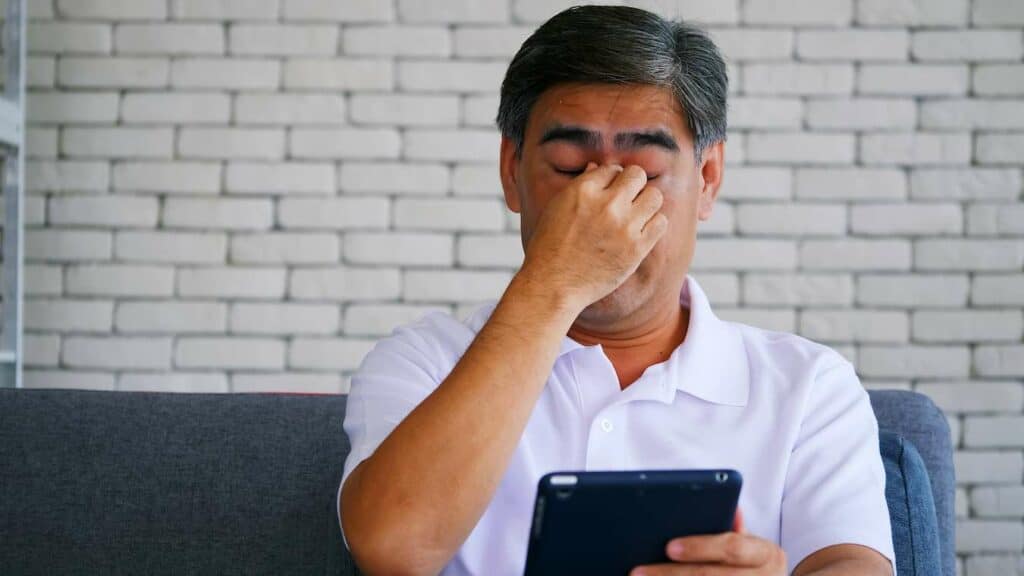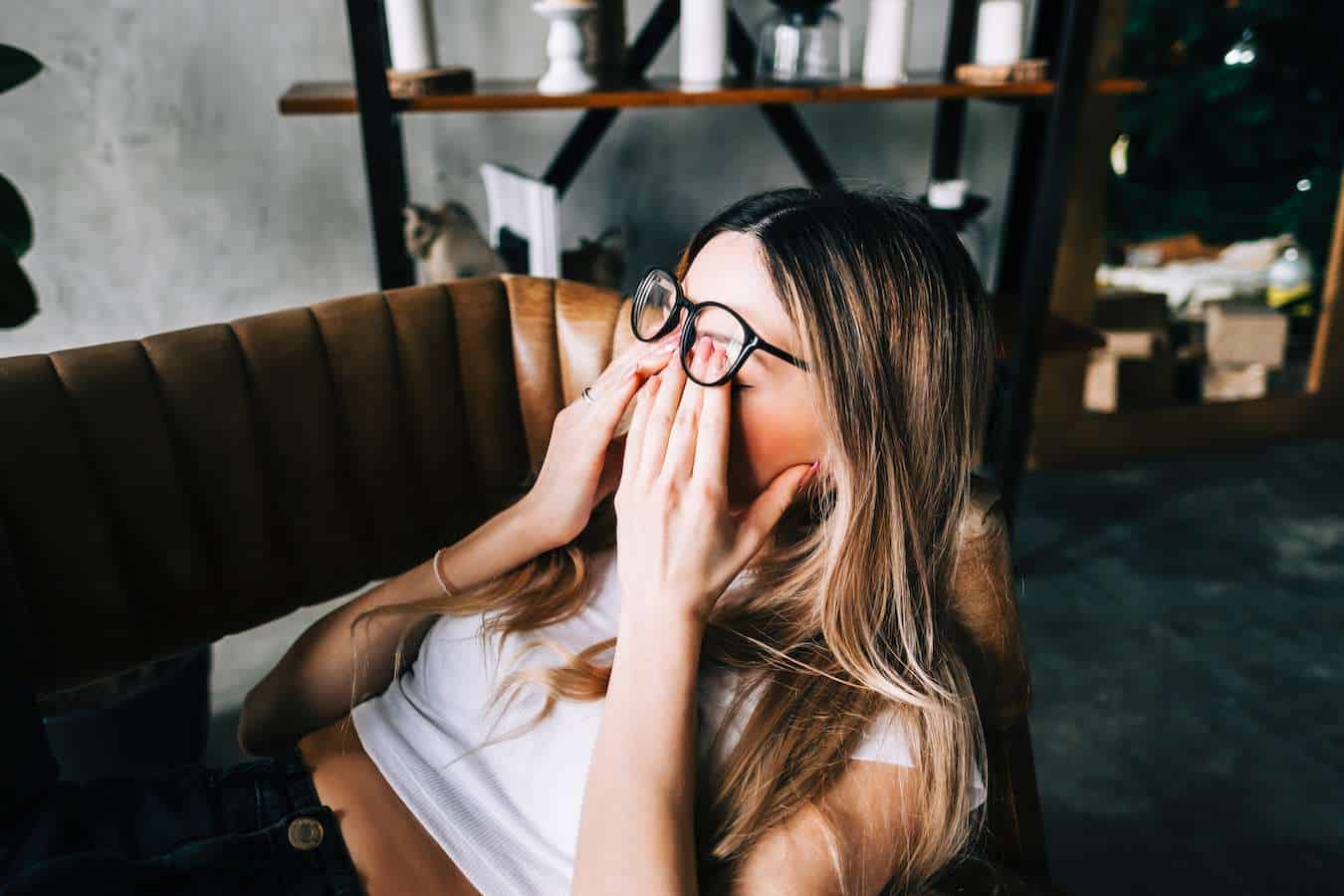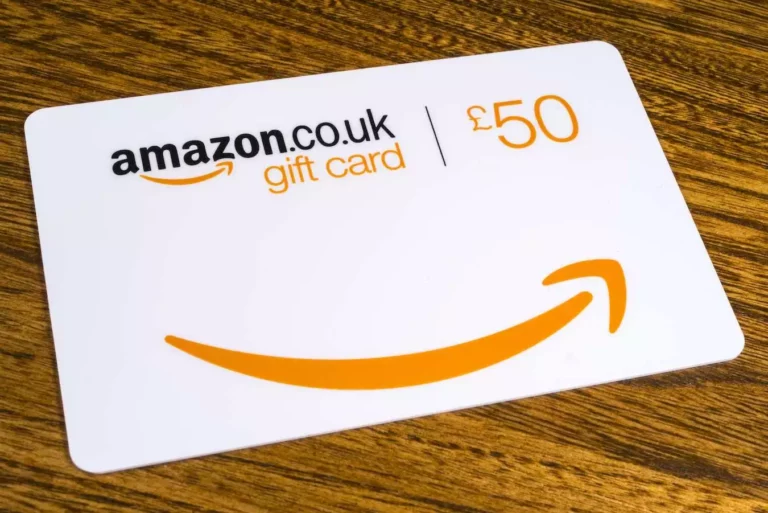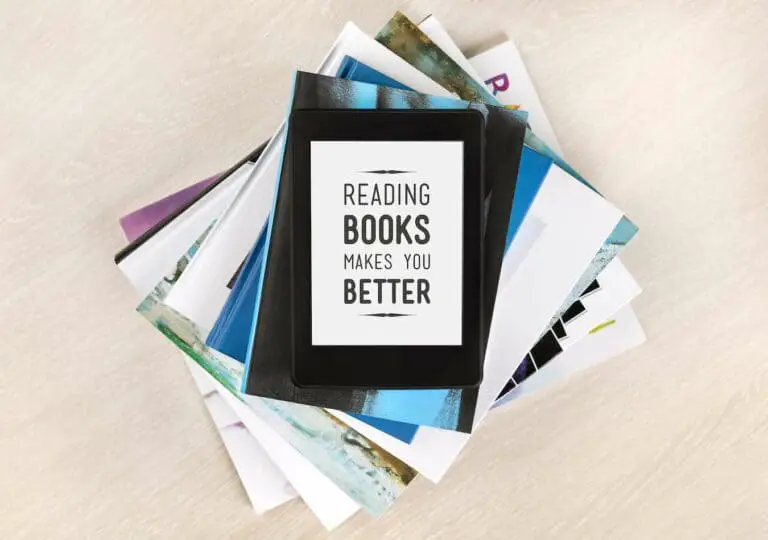Do Kindles Have Blue Light? Is It Harmful? [Full Guide!]
Disclosure: This post may contain affiliate links. I may get a commission if you decide to purchase through my links, at no additional cost to you.
While Kindle is an incredibly handy device for readers and book lovers, many people are concerned about the safety of reading from a screen. Today I’m going to talk about Kindle blue light worries and if they’re justified.
Kindles have blue light. However, recent models direct it to the screen and not your eyes, reducing the negative impact. Kindles emit much less blue light than smartphones, iPads, or light bulbs and are safe to use for reading.
In this article, I will give you more details on the amounts of blue light emitted by Kindle and how it is filtered to minimize the effects on a reader. I will also tell you more about blue light and how you can reduce its impacts to improve sleep and protect your eyesight.
How Much Blue Light Do Kindles Emit?
Blue light gets a bad reputation consistently as the blue light emitted from devices is known to cause dry eyes and eye strain. So, people start to worry immediately when they hear a device exposes them to it.
However, all the screens on your devices have blue light: your laptop, smartphone, tablet, and Kindle are included. What matters is how the light is projected and how much of it reaches you in the end.
While Kindles do emit blue light, they have much less of it than most devices you use on a daily basis. Your smartphone, for instance, emits two to six times more blue light than a Kindle Paperwhite at full brightness, and an iPad Pro emits nine times as much.
Kindle Paperwhite also uses a reflective technology that somewhat protects you from blue light. It means that the light doesn’t go directly into your eyes but is reflected off the page and only then reaches you. That’s much safer for you as the blue light exposure is effectively reduced.
Kindles don’t include filters or options to turn the blue light off, the only exception being the Fire Tablet. The reason for this is that the amounts of blue light are too low to worry about and include extra protective features. The technology they use protects you enough as it is.
This means using a Kindle is significantly less harmful than other devices incorporated into our lives. However, the blue light is still there, so if you’re worried about its effects, you should be aware that even with the small portions Kindle has, it still impacts your sleep and eyesight if you use your e-reader a lot on a regular basis.
What Is Blue Light and Why It Is Bad for You
Why do people worry about blue light so much? It would help to learn more about its effects to understand whether the concerns are justified.
Is Blue Light Really that Bad?
As you probably know, light is a spectrum that represents rays of a variety of colors. Blue light is on that spectrum, too, and it’s an essential and natural part of it. Its primary source is the sun, which produces blue light daily.
So blue light is not necessarily bad. When you receive it naturally, you actually experience an energy boost, and your mood improves. It also regulates your sleeping cycle, signaling your body that the sun is out and it’s time to be awake.
Artificial blue light, however, is known to be harmful in various ways. This, again, mainly has to do with the quality of your sleep. While natural blue light navigates you through the day and night cycles, the blue light that comes off your screen interferes with it, mixing the signals up.
It means you get less sleep and generally sleep worse than you would without excessive blue light exposure. This is why it is not recommended to use your phone before going to bed or watch movies on your tablet late at night.
Blue light has also been reported to cause headaches, negatively impact your eyesight, and contribute to other factors causing more severe illnesses such as cancer or depression. These adverse effects do sound scary enough for one to become concerned.
However, you can significantly reduce the negative influence of blue light on your health by limiting your time using your electronic devices, especially before sleep.
The amount of blue light a device exposes you to also weighs in. For instance, using your smartphone before bed is not recommended, but a Kindle that emits much less blue light, especially in night mode, is less harmful.
Overall, Kindles should not cause any serious concerns regarding blue light exposure. Still, it is best not to use it right before you go to sleep.
How To Reduce the Effect of Blue Light on Your Kindle?

Lastly, I would like to share with you some tips that can help reduce blue light exposure even more and ensure healthy sleep cycles even if you use your Kindle a lot.
1. Reduce Screen Brightness
Reduced screen brightness significantly decreases blue light exposure. A Paperwhite working at half the brightness emits so little blue light it is unlikely to cause any harm to you. If you can reduce brightness even more while still reading comfortably, you can eliminate the negative effects completely.
Keeping screen brightness low is generally recommended for several other reasons. It prolongs battery life, as a lot of power goes into supporting high brightness.
The recommended brightness level for Kindle is 13. You can adjust it to your personal preference to ensure you feel comfortable while reading. Typically, you will be able to see the text fine around this brightness value unless it is very bright outside.
However, it is also not recommended to expose your Kindle to direct sunlight and heat as it reduces the durability of your battery. Plus, the high brightness level you will need to see the page clearly is dangerous for your eyesight.
To reduce the negative impacts on your health, read under comfortable natural or artificial light and keep the screen brightness as low as is suitable for you.
2. Use Dark Mode
Dark mode, also called Night mode, changes the background color to black while switching the text color to white. It works best when there is not much light around, so the screen brightness doesn’t have to compete with it.
What is great about the dark mode is that it drastically reduces the amount of light you are exposed to, including blue light. That’s because there is much less white on the screen, and, therefore, less light is reflected on you.
Here’s how you can switch to dark mode:
- Go to the home page.
- Click on settings at the top of your screen.
- Choose Accessibility.
- Select Invert Black and White.
You can test this feature and determine whether you feel comfortable reading in this mode. If you’re able to use it more often, it will limit the blue light exposure enough for you not to worry about it at all.
3. Block the Blue Light
With people being more and more aware of the impacts of artificial blue light, products like protective blue light-blocking glass are becoming increasingly common.
People are divided on whether such protectors help reduce blue light exposure, but many find them highly effective. If you’d like to find a physical way to block the blue light coming from your screen, it is worth giving them a chance.
They work pretty much as a protective glass or stick-on that you get for your phone or tablet in order to protect the screen from damage. The product is applied directly to the screen and creates a filtering layer, reportedly preventing blue light from reaching you.
Such products can be found on Amazon or at a local store selling accessories for phones and similar personal devices. As their popularity grows, it is easy to find a glass or stick-on for your specific Kindle model.
If you get it at a store, you can also ask a professional to apply it for you. Applying the product carefully is critical, as any dust on it will prevent it from sticking well, and air bubbles will cause you a lot of irritation and give you less protection.
4. Stick to Healthy User Habits
The negative effects of blue light exposure can be reduced significantly by following the easy tips on how to use your devices in a healthy way.
The first rule I have already mentioned is limiting your time reading on Kindle before bed. The reason is simple: going to sleep right after the prolonged blue light exposure negatively impacts the quality of your sleep and interferes with your sleeping cycle.
Any reader will admit that it’s extremely pleasant to read before bed, and for many of us, it’s an enjoyable and valuable habit. It is also difficult for a working person to find some time for reading during the day.
The best way around it is to give yourself some time after you put your Kindle away to do other things. Spend about half an hour listening to music, chatting with your family, or petting your cat. If you like to read in bed before falling asleep, just switch to a physical book instead of a Kindle.
Or you can get an audiobook on Audible and listen to it before bed. If you’ve recently received an Amazon gift card, you can use it for Audible among other things. If you’re curious to learn more, check out this article.
Another tip is to follow the famous 20-20-20 rule. You have probably heard of it or seen it on TikTok: for every 20 minutes you spend looking at your screen, take 20 seconds to look at something 20 feet away.
While the previous tip helps you prevent blue light interference with your sleep, this one decreases the strain on your eyes, lowering the likelihood of your eyesight deteriorating over time.






![Can You Print Kindle Books? [Here’s What You Should Know!]](https://curiouscustomer.com/wp-content/uploads/2022/12/pexels-perfecto-capucine-1329571-768x512.jpeg)
